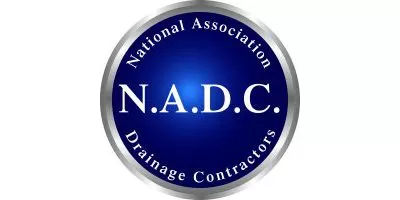





SuDS, which stands for Sustainable Drainage Systems, are becoming increasingly popular. That’s why this month at Express Drainage Surveys, we want to take time to explain what they are, how they mimic natural drainage to manage rainfall carefully and what’s driving their increasingly pivotal role for properties across the UK.
In this guide, you’ll learn all about the types of SuDS – source, site and regional controls – how they work and the way that some other techniques can help to address runoff. We’ll also touch upon the key benefits, including a reduction in flooding and pollution risks while enhancing biodiversity. Finally, we’ll also explore UK legislation and how these systems are designed and maintained.
SuDS are a neutral and environmentally sensitive way to deal with surface water runoff for any development, but specifically around highly developed areas. The core principle of this approach is to slow, store and treat the water, rather than simply trying to discharge it somewhere immediately.
There are three general types of sustainable drainage systems applied here in the UK. The first is source control measures. These help to handle runoff and rainwater close to where it’s falling on the surface.
Secondly, there are site control measures. These are designed to tackle runoff from bigger areas, such as whole housing development sites, retail parks and some major road infrastructure.
Finally, we get to regional control measures. These are further along in the chain of source and site measures, gathering water from much bigger areas. Dealt with using the same principle of slowing, storing and treating, they simply operate on a larger scale in terms of sheer volume.
How do sustainable drainage systems work? Here, we take a look at each control type:
Each system is slightly different based on the material, approach and scale, but as you can see, they share the common goal of reducing pressure on sewer systems.
You might be wondering why there is so much talk about SuDS right now, so let’s take a look at the major benefits of sustainable drainage systems in the context of the UK:
As a key part of how we now plan, build and manage developments across the country, it’s time to take a look at what you need to know in England and Wales when it comes to the laws and policies for SuDS. It all boils down to the responsible management of surface water and the reduction of flood risks.
If you’re keen to implement sustainable drainage solutions for your property or development, you should seek the assistance of planning and design specialists to ensure you’re meeting the relevant standards.
While SuDS are a positive addition to our infrastructure here in the UK, they should be designed with maintenance in mind. This means that it can be kept up to standard, always working, and you’re not then liable for any issues further down the line.
Certain sustainable drainage systems may require surveys to report on their condition, which is another aspect of maintenance to keep in mind when planning any such infrastructure. At Express Drainage Surveys, we can assist with CCTV drain surveys for certain sustainable drainage systems, allowing you to inspect their condition and pinpoint any issues.
With no hidden charges, affordable packages and rapid response times, whenever you need drainage services, we’re the company to call upon. While we specialise in CCTV surveys, our accredited engineers provide a full range of services to meet your every need, including the following:
So, whether it’s trouble with a recurring blockage or if you need a survey to establish and map your current drainage system, we’re always on hand. Contact us today to discuss your exact requirements, and we’ll provide a free estimate.
This website uses cookies to enhance your browsing experience and deliver personalised ads. By clicking “Accept All Cookies”, you agree to the storing of cookies on your device to enhance site navigation, analyse site usage, and assist in our marketing efforts.